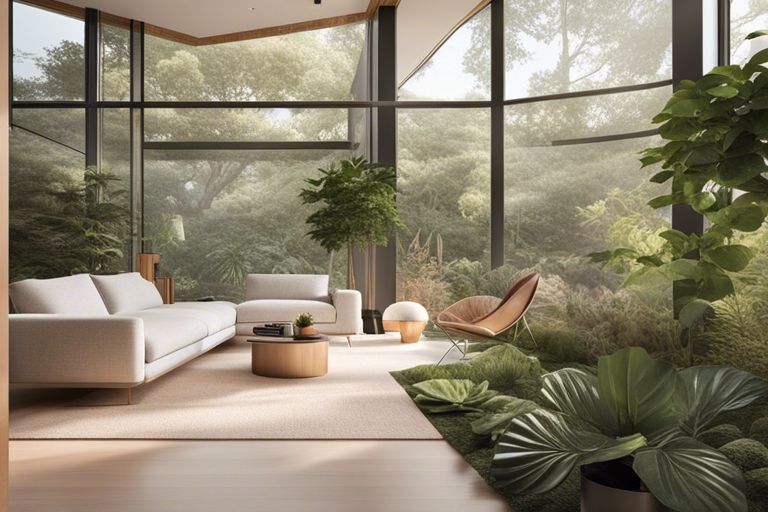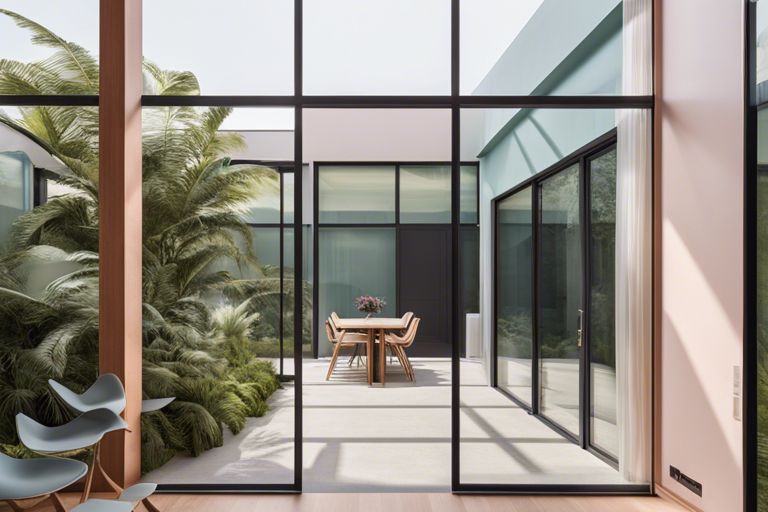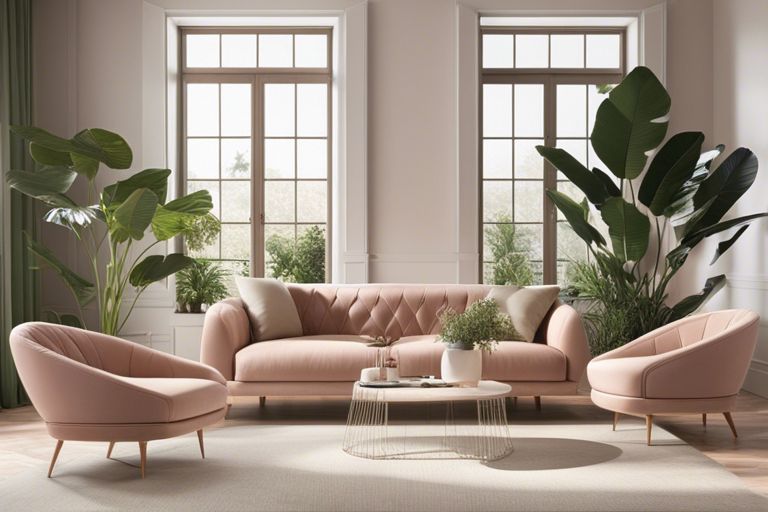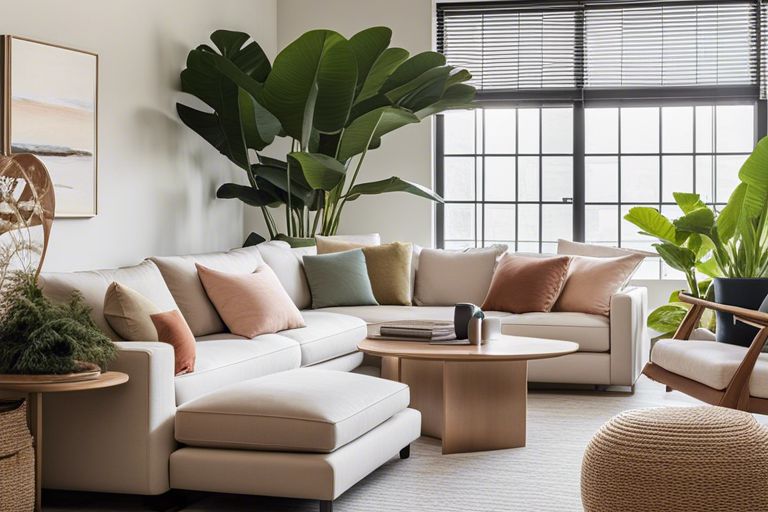Many of Rachel Carson’s writings emphasize the importance of connecting with nature and incorporating native plants in your biophilic design can have a positive impact on the environment. By choosing plants that are indigenous to your region, you not only support local biodiversity but also create a healthy ecosystem for wildlife. Learn how to enhance your living or working space with the beauty and benefits of native plants to promote a closer relationship with nature.
Key Takeaways:
- Native plants support local ecosystems: Incorporating native plants in biophilic design helps support local wildlife and promotes biodiversity.
- Enhanced connection to nature: Using native plants in design can create a stronger bond with the natural environment for building occupants.
- Low maintenance and sustainability: Native plants are well-adapted to local conditions, requiring less water and maintenance, making them a sustainable choice for biophilic design.
The Importance of Native Plants
The use of native plants in biophilic design is crucial for several reasons. Not only do native plants support the local ecosystem, but they also promote biodiversity and create a sense of place. By incorporating native plants into your design, you can help preserve the natural heritage of your region and provide necessary habitats for local wildlife.
Preserving Local Ecosystems
Any effort to include native plants in your biophilic design contributes to the preservation of local ecosystems. Native plants have evolved to thrive in specific environmental conditions and provide food and shelter for indigenous animals. By choosing native species for your landscaping projects, you can help maintain the delicate balance of your local ecosystem and prevent the introduction of invasive species that can outcompete native plants.
Supporting Biodiversity
Native plants play a vital role in supporting biodiversity within your surroundings. By planting a variety of native species, you can create habitats that attract different types of pollinators, birds, and other wildlife. This not only enhances the overall health of the ecosystem but also fosters resilience against environmental changes. Supporting biodiversity through the use of native plants is necessary for ensuring a thriving and sustainable environment for future generations.
To maximize the benefits of supporting biodiversity in your biophilic design, consider planting a diverse range of native species that bloom at different times of the year. This will provide food and shelter for wildlife throughout the seasons, creating a dynamic and resilient ecosystem in your own backyard.
The Benefits of Biophilic Design
Improving Mental Health
One of the significant benefits of incorporating biophilic design into your space is the positive impact it can have on your mental health. Connecting with nature through elements like natural light, indoor plants, and organic materials has been shown to reduce stress and anxiety levels. Being surrounded by nature in your environment can promote a sense of calm and well-being, ultimately improving your overall mental health.
Boosting Productivity
Biophilic design not only enhances your mental well-being but also has the potential to boost your productivity in various settings. Incorporating natural elements into your workspace can enhance creativity and focus. Studies have indicated that spaces with biophilic design elements can lead to increased productivity and improved cognitive function.
Benefits: By incorporating biophilic design into your spaces, you can experience improved mental health, reduced stress levels, enhanced creativity and focus, and ultimately boosted productivity and well-being.

Why Native Plants Matter in Biophilic Design
Authenticity and Connection to Place
Designing with native plants in your biophilic design brings an inherent sense of authenticity and connection to the local environment. By incorporating plants that are indigenous to your region, you are creating a design that reflects the natural beauty and diversity of the area. This connection to place not only enhances the aesthetic appeal of your space but also fosters a deeper appreciation for the unique ecosystems that surround you.
Low Maintenance and Sustainability
The use of native plants in biophilic design offers a myriad of benefits, one of the most significant being their low maintenance requirements and sustainability. Native plants are well-adapted to local climate and soil conditions, making them more resilient to pests, diseases, and extreme weather events. They also typically require less water and fertilizer compared to non-native species, reducing the need for ongoing maintenance and resources. This not only saves you time and effort but also contributes to a more sustainable and eco-friendly design approach.
Native plants play a crucial role in promoting biodiversity and supporting local wildlife populations. Their presence can attract pollinators like bees and butterflies, provide food and shelter for birds, and help maintain the delicate balance of the ecosystem. By choosing native plants for your biophilic design, you are not only creating a beautiful and harmonious space but also actively contributing to the health and well-being of the environment around you.
Choosing the Right Native Plants
Your biophilic design can greatly benefit from incorporating native plants that thrive in your specific region. When opting for native plants, it is important to consider the climate and soil conditions of your location to ensure the plants will flourish.
Considering Climate and Soil Conditions
One crucial factor to keep in mind is the climate of your area. Native plants are well-adapted to the climate they originate from, making them resilient and low-maintenance choices for your biophilic design. Additionally, the soil conditions in your garden or outdoor space play a vital role in the success of your plants. Choosing plants that are suited to your soil type will promote healthy growth and longevity.
Selecting Plants for Specific Design Goals
Plants can serve various design goals in your biophilic design, such as creating privacy screens, attracting wildlife, or adding color to your space. Native plants can be selected strategically to fulfill these design objectives while also providing ecological benefits to your environment.
This deliberate selection of native plants can enhance the biodiversity of your surroundings, support pollinators like bees and butterflies, and create a more sustainable ecosystem overall. By understanding your design goals and the unique characteristics of native plants, you can curate a biophilic space that is both visually appealing and environmentally conscious.
Incorporating Native Plants into Biophilic Design
For those looking to create a biophilic design, incorporating native plants is vital. Native plants are not only beautiful but also play a crucial role in creating sustainable and resilient ecosystems. They are well-adapted to the local climate, requiring less water and maintenance compared to non-native species. By including native plants in your design, you can attract local wildlife such as birds, butterflies, and bees, enhancing biodiversity in your space. To learn more about biophilic design and why it matters, check out Define Biophilic – What Is It & Why’s It Matter? (2024).
Vertical Gardens and Living Walls
Plants are a fantastic way to incorporate biophilic design into vertical spaces. Vertical gardens and living walls not only add a touch of nature but also improve air quality and bring numerous health benefits. By using native plant species in these installations, you can create a thriving microhabitat that connects you with nature even in urban environments.
Indoor Planters and Containers
For creating a biophilic design indoors, indoor planters and containers are a versatile option. You can place them on shelves, countertops, or even hang them from the ceiling. Choosing native plants for these containers not only adds a pop of green to your space but also improves indoor air quality and creates a calming atmosphere. Remember to consider the light and moisture requirements of the native plants you select to ensure they thrive in their new home.
Walls can also be transformed into living pieces of art by installing vertical gardens or hanging planters. This not only adds visual interest to your space but also helps in reducing stress and increasing productivity. Incorporating native plants into these wall displays enhances the connection to the surrounding environment and creates a holistic biophilic design.
Overcoming Challenges and Misconceptions
Many individuals may hesitate to incorporate native plants into their biophilic designs due to concerns about invasive species taking over their landscapes. However, it is crucial to understand that there are ways to address these worries and ensure that your native plant garden remains balanced and sustainable.
Addressing Invasive Species Concerns
Misconceptions about native plants being invasive often stem from a lack of knowledge about the species being chosen. By consulting with local experts or native plant nurseries, you can select native plants that are well-behaved and suited to your specific ecosystem. Additionally, regular monitoring and maintenance can help prevent any native plants from becoming invasive on your property.
Debunking Myths about Native Plant Maintenance
Misconceptions about the difficulties of maintaining native plants may deter some individuals from incorporating them into their biophilic designs. However, it is important to note that native plants are often more resilient and require less upkeep than non-native species once established. They have evolved to thrive in their native habitats and can tolerate local climate conditions with minimal intervention.
Overcoming
To debunk the myths about native plant maintenance, consider the benefits that these plants can bring to your biophilic design. Embracing native plants not only enhances biodiversity but also reduces the need for pesticides and excessive watering. By working with nature rather than against it, you can create a sustainable and visually appealing landscape that benefits both the environment and your well-being.
Summing up
Ultimately, integrating native plants into your biophilic design not only enhances the aesthetic appeal of your space but also promotes biodiversity and supports the local ecosystem. By utilizing plants that are indigenous to your region, you can create a harmonious and sustainable environment that benefits both you and the natural world around you.
FAQ
Q: Why should I incorporate native plants in my biophilic design?
A: Incorporating native plants in your biophilic design is important because they are adapted to the local environment, making them easier to care for and more resilient to pests and diseases. Native plants also provide food and shelter for local wildlife, promoting biodiversity and a healthy ecosystem.
Q: How can I select the right native plants for my biophilic design?
A: When choosing native plants for your biophilic design, consider factors such as sun exposure, soil type, and water availability. Research local native plant species and consult with local nurseries or botanical gardens for guidance on selecting the right plants for your specific location and design goals.
Q: What are some examples of native plants that work well in biophilic designs?
A: Some examples of native plants that are commonly used in biophilic designs include Eastern Redbud, Purple Coneflower, Switchgrass, and Virginia Bluebells. These plants not only add beauty and natural character to your design but also support the local ecosystem and contribute to a sense of place and connection to the environment.


